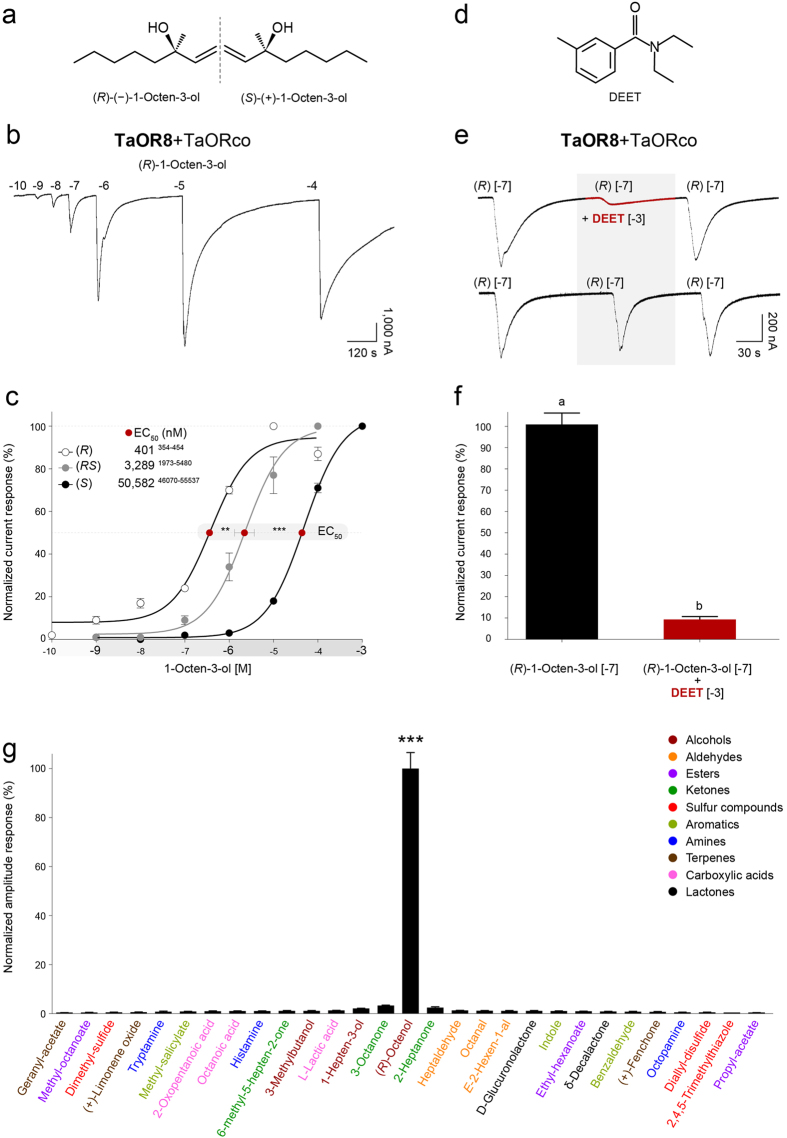Figure 2. Functional analysis of TaOR8.
(a) 1-Octen-3-ol occurs in two enantiomeric forms, (R)-(−)-1-octen-3-ol and (S)-(+)-1-octen-3-ol. (b) Representative current trace elicited by increasing concentrations of (R)-(−)-1-octen-3-ol recorded from Xenopus oocytes co-expressing the TaOr8 and TaORco receptor complex. (c) Concentration-response relationships of TaOR8+TaORco elicited by (R)-(−)-1-octen-3-ol [(R), open circle, n = 5], (S)-(+)-1-octen-3-ol [(S), grey circles, n = 5) and (RS)-1-octen-3-ol [(RS), black circles, n = 6]. Responses were normalized to the maximum response. Extrapolated EC50 values are shown with red circles. Lower and upper EC50 values (standard error) are in upper case. Asterisks represent statistically significant differences of the OR responses (one-way ANOVA followed by Tukey’s post test; **P < 0.01 and ***P < 0.001). Odorant concentrations were plotted on a logarithmic scale. Each point represents the mean and error bars indicate s.e.m. (d) N,N-Diethyl-meta-toluamide, commonly called DEET, is a synthetic insect repellent. (e) DEET inhibits the response of OR8 to octenol: Representative current traces of oocytes expressing TaOR8+TaORco elicited by 10−7 M (R)-(−)-1-octen-3-ol alone or in combination with 10−3 M DEET. (f) Normalized responses of TaOR8+TaORco to 10−7 M (R)-(−)-1-octen-3-ol alone or in combination with 10−3 M DEET. DEET’s effect was statistically significant (Student’s t-test, P < 0.01, n = 5–7). (g) (R)-(−)-1-octen-3-ol is a potent TaOR8 activator (one-way ANOVA followed by Tukey’s post test; ***P < 0.0001). Mean responses (±s.e.m., n = 6) to 400 nM of 28 odorants were normalized to (R)-octenol.

